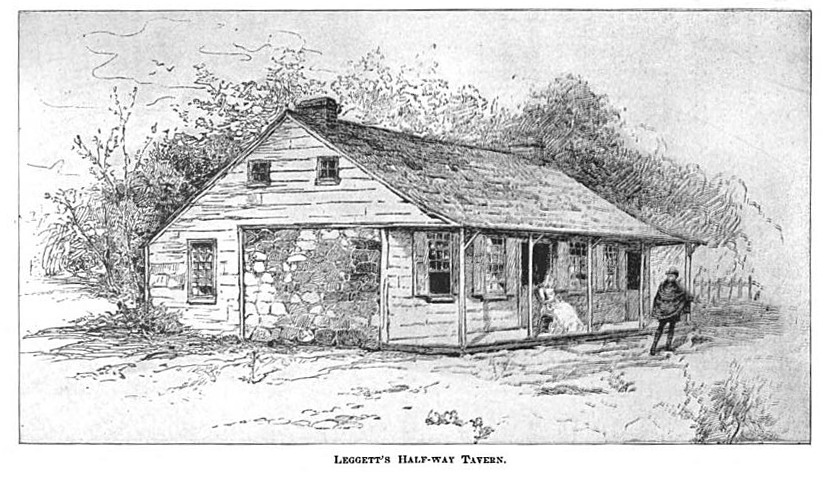
On the Bridle Path in Central Park, by East Drive near 102nd Street, there is a sudden rise in elevation. No more than a few feet in height, and no more than a few yards in length. It seems to be a rubble-filled mound, with lots of loose stones, like debris from an old building. Maps show that the old Black Horse Tavern was right about this spot.
Until 1756 the Black Horse, and surrounding property, were owned by a Jacob Dyckman. Dyckman sold the place to his in-laws, the McGowans, and went up north to Inwood to start a new Black Horse Tavern by the Harlem River. Perhaps thirty years later, the McGowans leased this tavern to a John Leggett. It seems Leggett and his family ran the tavern for the next fifteen or twenty years. In Christopher Colles’s 1789 map of the Post Road, the tavern is identified simply as “Leggets,” slightly south of the McGowan house, and midpoint between the seven- and eight-mile stones from New York City.
This drawing appears in a 1905 compilation of papers of New York’s first post-Revolution governor, George Clinton (uncle of Dewitt Clinton). It is captioned “Leggett’s Half-Way Tavern” but the drawing’s origin is not identified. Its rural shabbiness makes it seem authentic, as does the fact that it has no sign marking it as The Black Horse or Leggett’s. On the other hand, the rendering style seems late-19th century, when there was a whole genre of Decayed Wayside Inn etchings.
Addendum, May 12, 2011. Continuing points of confusion: was this the only tavern in the immediate area? Was there ever a tavern across the road, in the Dyckman/McGown house? Old guidebooks and popular histories often speak of the house and the tavern as one and the same. When you read of Mount St. Vincent’s or the McGown’s Pass Tavern, the story usually goes that this convent or that restaurant were founded on the site of an old tavern from the 1750s. Possibly this is just routine sloppiness, like the oft-reproduced comment that Catherine McGown was a “Scotswoman.” Or maybe the tavern really was at the Dyckman/McGown house originally, but it moved across the road when the Leggetts took over the business. Contemporary records aren’t much help here, since the whole area was “McGowan’s.”
